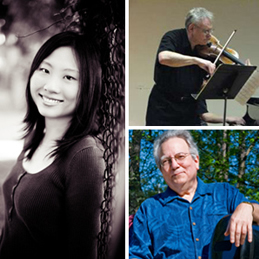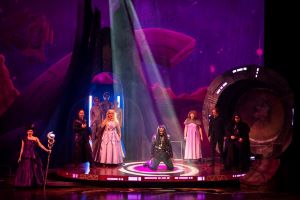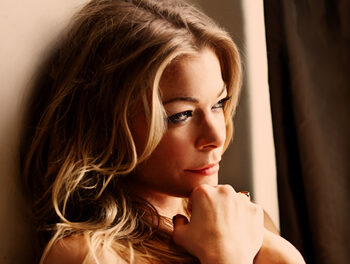At Meymandi Concert Hall in Raleigh’s Progress Energy Center for the Performing Arts the North Carolina Symphony kicked off its Friday Favorites series with a gently dissected performance-cum-presentation of Symphony Fantastique, French Romantic Hector Berlioz’ groundbreaking programmatic first symphony. After this first performance it is clear the concept behind the series is strong, with potential to expand the orchestra’s audience and support base.
A proactive attitude toward dwindling audiences, lack of funding and union disputes shows that the North Carolina Symphony is wisely anticipating similar problems orchestras around the country have experienced in recent years. The primary concern is audience retention, and such challenges have caused drastic shifts in the way large ensembles think about programming and their communities. This kind of planning seems to be the only way to ensure the institution of the symphony orchestra will not become a relic of thetwentieth century.
Still, the Friday Favorites concept isn’t the universal panacea that American orchestras have been searching for. Before its debut, one question in particular obscured the predicted effectiveness of this series: Who – apart from senior citizens and schoolchildren on educational field trips – would show up to symphony performances at 11:30 on a Friday morning?
At the debut performance, however, attendance didn’t seem to be a problem. The NCS has presented Friday Favorites as a “lunchtime series,” complete with box lunches for sale. The audience for Symphonie Fantastique consisted of a fair share of retirees and seniors, and a section of the orchestra level’s leftmost seats were cordoned off for a busload of energetic pre-teens. But a great deal of Meymandi’s seats were filled by relaxed, professional-looking types who had the luxury of taking an extra-long lunch or confining the work week to only four days.
Regardless of demographics, the presentation of performances in the Friday Favorites series is key: In a refined setting a little more casual than an evening concert, Resident Conductor William Henry Curry led an energetic, deftly executed performance whose intent was to enliven the audience’s experience of the music byincorporating its musicological and historical context. The emotional extremes and programmatic nature of Symphonie Fantastique couldn’t have suited this series better; the prominence of specific easy-to-hear themes as characters, and the use of meter – as in the waltz tempo to imply a dance in the second movement, “Un Bal” – and instrumentation to texturize specific settings in the plot also makes this piece the perfect way to demonstrate to non-musicians just how music can be used to evoke not only emotions but also entire plotlines and characters.
The real-life romance behind Symphonie Fantastique ended bitterly, although not quite as tragically as the young protagonist’s ill fated obsession. One imagines Berlioz would no doubt point out the artistic purpose his passions served with what Maestro Curry called “the most remarkable first symphony ever composed” as the glittering result of the composer’s unshakeable infatuation. Beethoven, who died in 1827, a mere three years before Berlioz’ symphonic debut, radically redefined what a symphony could be. This musical climate was perfect for the young composer to exercise his prodigious creative passion in a meticulously created work of art. Berlioz strived in his most famous work to use the tools available to him as a composer – instrumentation, orchestration, melody, harmony, texture, tone, and the pioneering of the program note – to show that music could evoke impressions more specific than raw emotions. In this way, Berlioz brought syntax to the emerging narrative nature of Romantic music.
The five movements that comprise Symphonie Fantastique were interspersed with Curry’s mini-lectures on significant themes, the historical context in which the piece was written, and personal circumstances surrounding the its composition. The orchestra even demonstrated significant melodies and specific events depicted in each movement: the ever-recurring idée fixe that symbolizes the object of the protagonist’s desire; the shepherd calls played by English horn and offstage oboe soloists in the third movement, “Scène aux champs”; the percussion’s gruesome rendition of the artist’s severed head bouncing to the floor at the end of the fourth, “Marche au supplice”; and the brutal descending brass lines that serve as demonic laughter in the fifth and final movement, “Songe d’une nuit de sabbat.”
Curry’s concise, witty explanations of specific motives showed the audience how the piece worked while explaining its narrative and the circumstances behind its composition. For this performance, at least, Curry stopped short of delving into theoretical or too-technical explanations of harmonic progressions or equipment. Perhaps this Musicology 101 primer brought out a little extra emotion in the performers; wind soloists on flute, oboe, English horn, and French horn performed with an appropriately contained passion, and the string and woodwind sections expertly portrayed the manic mood swings of the first three movements while most of the brass section sat tacit. When it came time for the protagonist to meet his grisly doom in the fourth and fifth movements, however, the low brass roared out an impressive, brimstone-tinged “Dies Irae,” followed by gleefully mellifluous demon-laughter to accompany the witches’ Sabbath. The performance ended with a glorious flood of full-on orchestral sound, whirling at a frenetic tempo towards the almost ironically triumphant final chords.
After seeing how well Maestro Curry and the North Carolina Symphony captivated their audience with this unique presentation, it’s disappointing to learn that the series’ title is a little misleading: The next Friday Favorites performance won’t be held until February 2007, when Assistant Conductor Joan Landry will conduct Weber’s Overture to Der Freischütz and Brahms’ Symphony No. 1. In May 2007, the series will continue with Music Director Grant Llewellyn leading a performance of Saeverud’s Ballad of Revolt and Sibelius’ Symphony No. 2.













